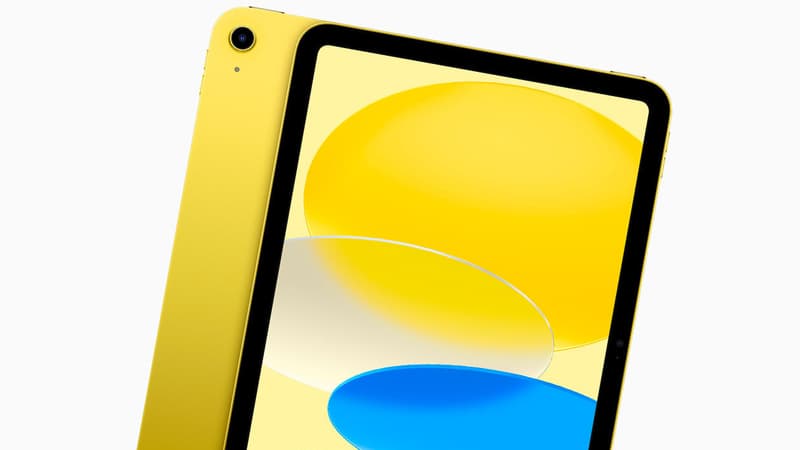It was the last of the Mohicans, the Gallic people who still resisted USB-C and cutting-edge design. Apple’s iPad finally gave in. On October 18, the brand presented its new touch panels. If the iPad Pro does not change anything in depth, it is enriched with the powerful M2 chip of the latest MacBook Air and MacBook Pro, compatibility with the Wi-Fi 6E connection and greater possibilities of the Apple Pencil at the writing level. Available in 11-inch and 12.9-inch, iPad Pro also supports ProRes video recording. But the real little revolution that has taken place has to do with the basic iPad.
The iPad, the beginning of the revolution (in color)
Apple’s low-cost model is completely renewing its copy. Gone is the outdated design reminiscent of the first models, the fingerprint sensor on the button and the large edges. Gone, above all, the Lightning socket to recharge: the entire iPad range is standardized and will now be USB-C. The iPhone remains one of the last standouts.
The 10th-generation iPad follows the same lines as its acolytes with straight edges and a fingerprint reader on the side unlock button, just like on the iPad Air and iPad mini. But the latest addition now comes in four color combinations: blue, pink, yellow, and grey. It will run on iPadOS 16, the tablet version of iOS 16.
It’s based on a better quality LCD screen, increased from 10.2 to 10.9 inches diagonally, the same as the iPad Air, but with some concessions in color rendering. The front camera is hidden in the edge (12 Mpx ultra wide angle and 122 ° field of view, with horizontally centered frame tracking function to stay in the center of the video).
To be as fast as other devices in the range during video calls, there are two microphones and two stereo speakers in landscape mode (compared to four on the iPad Pro). On the back, the camera has a single 12MP sensor that also supports 4K video.
Lightning… on the Apple Pencil
An upgrade from the brand’s other tablets, the iPad supports Wi-Fi 6 and 5G for the cellular model. Than compete with the iPad Air. But it has to make do with the A14 chip when the iPad Air has the M1 chip and the iPad mini has the more powerful A15 chip. Like them, it is offered in 64 or 256 GB of storage.
It will be compatible with the same Magic Keyboard Folio keyboard case as the iPad Air. However, a paradox remains: it is compatible with the first generation Apple Pencil which remains recharged with the Lightning socket. However, an adapter to USB-C will be provided.
Prices and availability of new Apple products
The iPad will be available on October 26 and starts at 589 euros in the Wi-Fi version (from 789 euros for the cellular model). Note that the iPad 9th generation with its old design costs 50 euros to sell now from 439 euros for 64 GB of storage.
The iPad Pro starts at 11 inches at 1,069 euros (1,269 euros in 5G) and at 1,469 euros with a 12.9-inch mini LED screen (1,669 euros in 5G).
The Apple TV 4K also gets an update with the addition of the A15 Bionic chip and support for HDR10+, in addition to Dolby Vision. A Wi-Fi version is added to the Wi-Fi version + Gigabit Ethernet port. Apple’s TV box also incorporates the Thread mesh protocol to serve as a relay for connected objects in the home and extend the connection. Storage doubles to 128GB.
The new Apple TV starts at 169 euros with its Siri Remote, which is now charged via USB-C. It will be available on November 4.
Source: BFM TV


